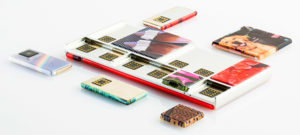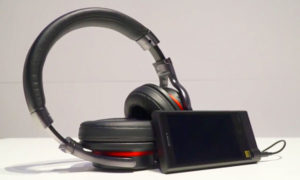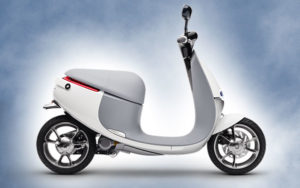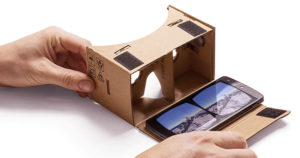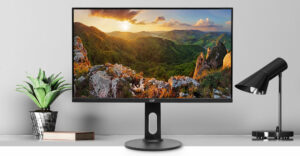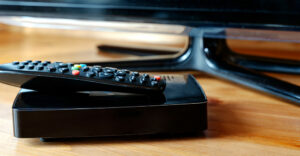
With its eye on notebook users and photo-sharing fans, Microsoft on Wednesday rolled out three new wireless mouse products and two new webcams.
First, citing increasing U.S. retail notebook PC sales, Microsoft unveiled the Bluetooth Notebook Mouse 5000 and the Wireless Notebook Laser Mouse 7000, both designed to make notebook computing more productive and to reduce touchpad fatigue.
“These additions to our product line showcase how Microsoft delivers the tools that match consumers’ computing needs — providing comfortable tools for the growing number of notebook users to get the job done on the go,” said Ivan Meljac, product marketing manager for Microsoft hardware. “The Hardware Group focuses on ease of use, and these mice are no exception, with simple, quick and reliable wireless connections.”
Bluetooth-Ready
The Bluetooth Notebook Mouse 5000 is designed to work seamlessly with Bluetooth-ready computers without the need for any external transceiver or extensive setup process. High-Definition Laser Technology is designed to provide smoother tracking, more responsiveness and better precision, Microsoft said.
The Wireless Notebook Laser Mouse 7000, meanwhile, features a shape based on that of the best-selling Microsoft Wireless Notebook Optical Mouse 3000. It offers 2.4GHz wireless, a snap-in transceiver and instant access to the Windows Vista Flip 3D feature, which lets users flip through open windows and quickly switch among applications.
The Bluetooth Notebook Mouse 5000 will be available in October, while the Wireless Notebook Laser Mouse 7000 will be widely available in September; both will have an estimated retail price of US$49.95.
Built-In Memory
Next, the Microsoft Mobile Memory Mouse 8000 is the industry’s first rechargeable notebook mouse with 1 GB of flash memory built right into the transceiver, Microsoft said. The single transceiver is a three-in-one tool that lets users simultaneously work wirelessly, save important files and recharge the mouse without sacrificing performance — all through one USB port.
“With the continued rise in notebook sales, there is a huge demand for smart peripherals that help mobile users get their work done more efficiently, and the Mobile Memory Mouse 8000 combines three key tools into one stylish device,” said Matt Barlow, worldwide director of marketing and partner development at Microsoft hardware.
“Adding a gigabyte of memory to the mouse transceiver is truly a computing milestone,” Barlow added. “We’ve packed more memory into the transceiver than an entire computer had 25 years ago.”
With magnetic charging and the option to connect via either Bluetooth or 2.4GHz wireless, the Microsoft Mobile Memory Mouse 8000 will be widely available in October for an estimated retail price of $99.95.
Sharing Photos
Finally, Microsoft’s two new webcams include a desktop unit, the LifeCam VX-7000, and a notebook unit, the LifeCam NX-3000. Both connect to Photo Swap, a feature that allows consumers to share digital photos with friends and family and see their reactions in real time, and both work closely with Windows Live Messenger.
“The Photo Swap feature is a perfect illustration of what a video call should be about: keeping in contact with loved ones, sharing memories and having fun,” said David Fortin, senior director for consumer product management at Windows Live.
Both LifeCams will be widely available in September. The VX-7000 will have an estimated retail price of $99.95, while the NX-3000 will be $59.95.
Sleepy Mice?
Bluetooth technology has some “inherent problems that make it painful to use,” Rob Enderle, president and principal analyst with Enderle Group, told TechNewsWorld.
While each generation of Bluetooth peripherals gets better, “traditionally Bluetooth peripherals have had fairly serious problems with regard to latency,” he explained. “The mice are better than the keyboards, but the problem is they tend to go to sleep.”
Proprietary products tend to be better than Bluetooth ones, Enderle added.
“The issues are declining, but if I have a choice, I probably wouldn’t pick Bluetooth, especially for a keyboard or mouse.”
The Port Crunch
The addition of storage in the Microsoft Mobile Memory Mouse 8000, on the other hand, is “a nice value-add,” Kurt Scherf, vice president and principal analyst with Parks Associates, told TechNewsWorld.
“Laptop sales are overtaking desktop sales, and in a lot of homes the laptop is the first computer of choice,” Scherf said. “I think this is an interesting idea, and a gig is a pretty robust amount of storage in terms of a flash device.”
There’s a convenience factor as well, Scherf added, in reducing the number of flash drives mobile consumers need to keep in their pockets.
Good Value
Finally, sharing photos is one of the primary reasons people use home computers and the Internet, Scherf noted, so by rolling out the new webcams, “Microsoft is delivering a blended experience.”
The webcams may have a hard time competing with competitive offerings, particularly those from Logitech, Enderle noted. For the price, however, “Microsoft’s products are a good value, with good quality that works well out of the box,” he said.
Indeed, Logitech is “the company to beat” in the peripherals market, Roger Kay, president of Endpoint Technologies, told TechNewsWorld.
“Mice, keyboards and cameras are the main peripherals for PCs, and even though the markets are static, they’re large and can’t be ignored,” Kay added. “Microsoft has to keep updating to stay competitive.”



